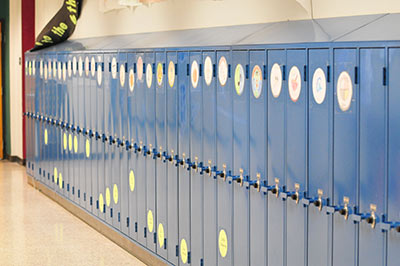Sokol, D. New special-needs schools demonstrate careful consideration for the touch, feel, and sound of architecture. Considering the design needs of students with special needs.
Tag: Accessibility
Meeting the Learning and Information Needs of All Students: Universal Design for School Libraries
Parker, K. (2007). This shift in accountability from special educators and parents of children with disabilities to schools and school districts represents an important change that holds great potential for school libraries.
Long Range Facilities Planning And Design Implementation For Students with Disabilities: A Guide for New Jersey School Districts
Education Law Center, 2005. The scope of this document is limited to the intersection of facilities planning and inclusion of students with disabilities. For further information about issues related to other aspects of facilities planning, you can visit ELC’s website at www.edlawcenter.org. With respect to other aspects of inclusion, please note that this document is just the tip of the iceberg. Moving from separation of students with disabilities to inclusion requires extensive planning and staff training. It goes without saying that enhancing a district's ability to educate children with disabilities--from mild to significant--will not result simply from creating more and better physical spaces in their neighborhood schools. Reducing the separation of children with disabilities will be impacted as much by increasing teacher expertise, changing attitudes and instituting innovative program models as it will be by adding square footage to buildings. The offices involved in the preparation of this document would be glad to help districts in their efforts to deal with these critical aspects of inclusion of students with disabilities.
ADA Guide for Facilities Managers at Public Universities and Colleges
There is much confusion at our universities and colleges about the Americans with Disabilities Act(ADA). How do universities adequately provide program accessibility for their campuses?
This guide will help facility management staff and ADA campus committees understand the school’s responsibilities under Title I and II of the ADA. Title I has specific protections for employees of government agencies and Title II covers the accessibility rights to all programs offered by Government-Owned institutions and agencies. Those rules are often implemented by using Title III, the physical design guidelines for the various required elements.
Inclusive Design at Universities: Common Errors and Best Practices
ACEF Webinar, Presented By: Dr. Edward Steinfeld
In light of numerous lawsuits related to non-compliance with accessibility codes and standards, many universities have had to make modifications and policy changes. The IDeA Center has provided expert consultation on ADA lawsuits from both the plaintiff and defense sides. Based on our experience conducting university accessibility audits and providing expert witness testimony, this webinar reviews the most common accessibility problems faced by universities. Inclusive design strategies that can be implemented, along with best practice case studies, are provided to help overcome these problems with an emphasis on improving cost effectiveness by enhancing the campus for all students and staff. (Posted July 10, 2014).
Designing Early Childhood Facilities
Arthur, D.W., Larson, C., Gillman, A., & Sussman, C. (2006).
Resource Guide Volume 2: Designing Early Childhood Facilities, published by LISC’s Community Investment Collaborative for Kids (CICK). This volume highlights the connection between well-designed space and high quality programming, and helps early childhood providers, community developers and architects plan effective spaces for young children. The guide includes an overview of design principles, a tour through a center’s functional areas, and information on materials, lighting, security, urban settings and accessibility.






